Zendesk is one of the most popular help desk management tools thanks to its extensive features and intuitive experience. With its ability to collate user feedback from all your channels into one platform, it has made a huge difference in the way support teams work.
Thanks in part to the mobile revolution, customer feedback and support requests are no longer only coming from traditional channels like phone and email. Customers expect you to meet them where they are, and more often today, where they are is in mobile apps. This segment of customers, who tend to be very tech-savvy and demand immediate results, expect to be able to reach your support team through a native in-app experience.
With the Instabug+Zendesk integration, not only can you collect bug reports and feedback from your mobile app, but you will also receive extensive information with each report. Information like device details, comprehensive logs, and repro steps will be attached to each report and forwarded right to your Zendesk dashboard. This will help your support team become aware of issues earlier, with all the information they need to solve them and close their tickets faster by aggregating feedback from your multiple channels in one place. Ultimately, this provides a much better experience for your customers on whatever channel they choose to contact you.
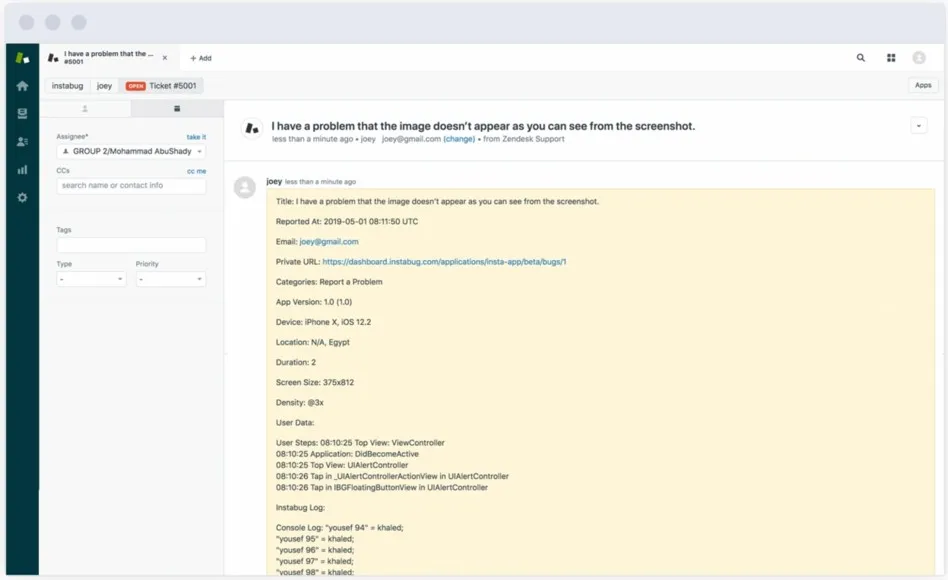
Let us first have a quick look at the process of integrating Instabug with Zendesk. The process is very simple and is done with just a few clicks from your Instabug dashboard.
- Navigate to the Integrations page from the Settings menu in your Instabug dashboard and click on the Zendesk icon. This will take you to the authentication page where you need to enter the host URL of your Zendesk dashboard.
.webp)
- After you click on Authenticate Zendesk, you will be redirected to Zendesk to allow Instabug access to your dashboard.
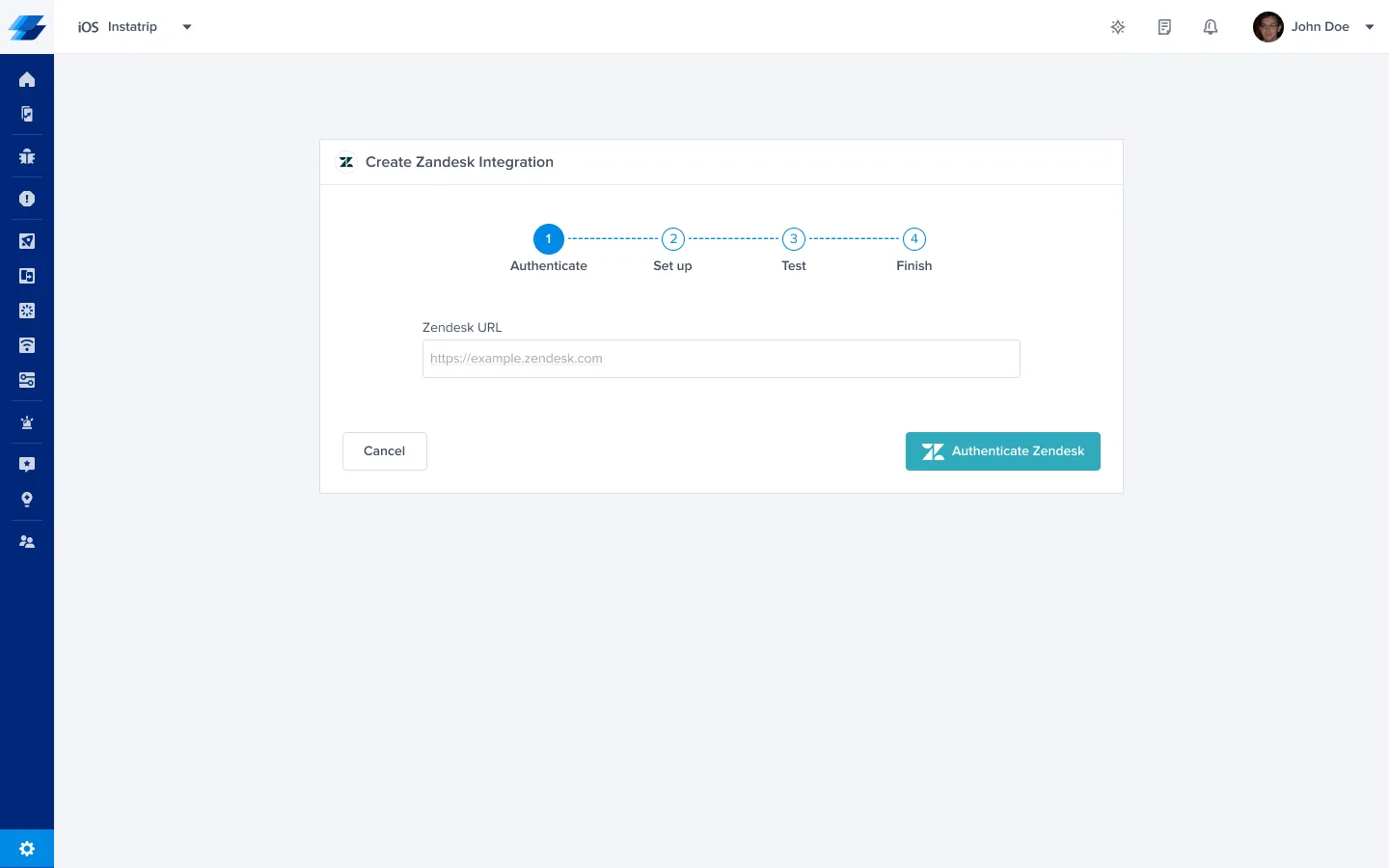
- When you click on Allow, you will be directed back to the Instabug dashboard where you can choose the organization and assignee to forward your issues to. You can also choose the information that will be attached to the ticket.
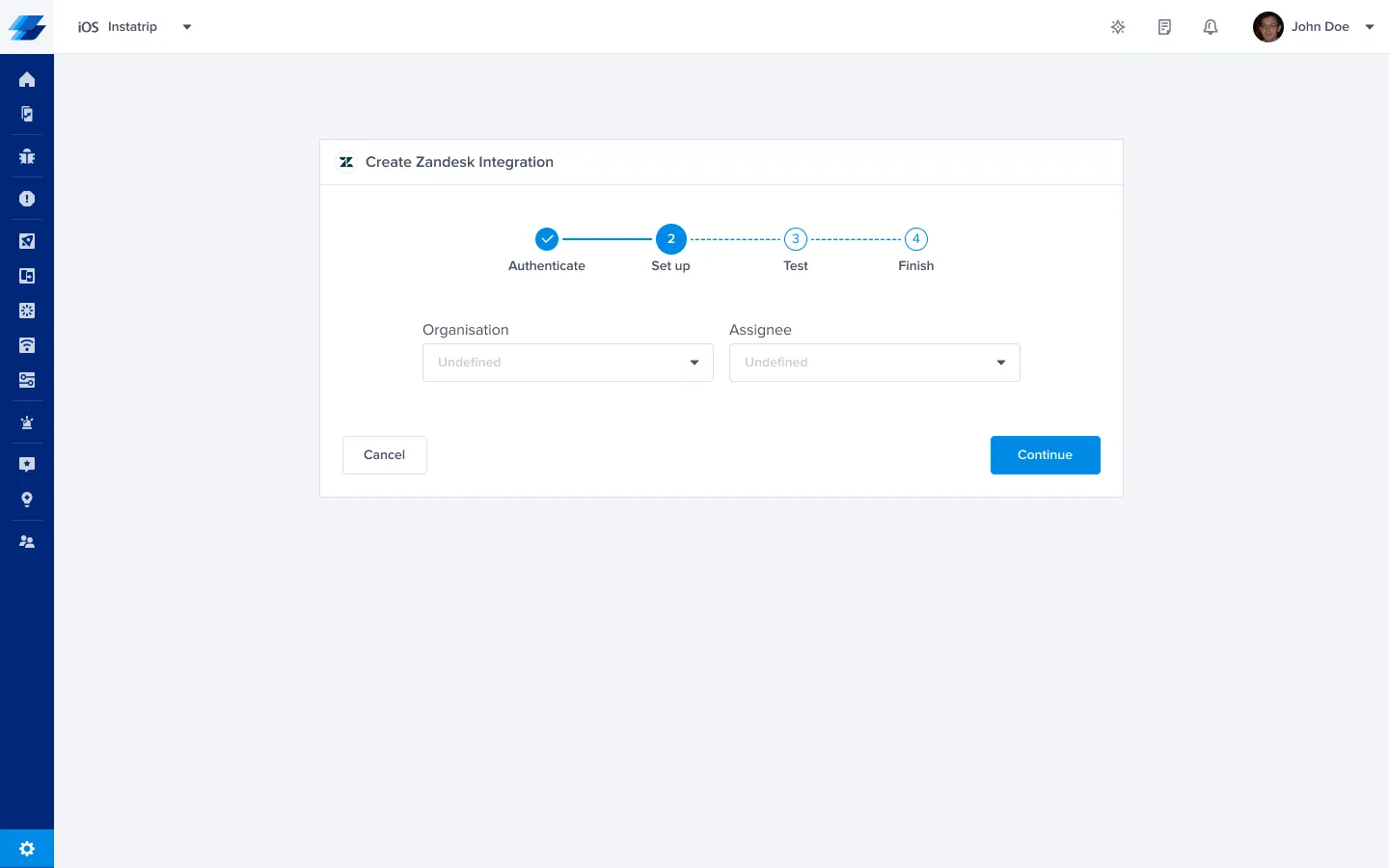
- Now Instabug will test the integration by sending a sample report to your dashboard. If all goes well you will be taken to the last step of the process. On the final page, you can give your integration a title and enable automatic forwarding for bugs, and/or crashes.

Pro tip: You can set up multiple Zendesk integrations for the same app, each with its own settings. For instance, you can set up a Zendesk integration that forwards bugs and crashes to engineering, another that forwards questions to a support agent, and one that forwards suggestions to your product team. You can also customize the information attached to each one. Just make sure you give your integrations a good name that will help you recognize them later.
As the number of your incoming support requests and tickets increase, it becomes increasingly difficult to triage and assign them. By combining Instabug’s report categories, tags, and rules with Zendesk's triggers, automations, and macros, you can automate a lot of the process. This will help you make sure your tickets are quickly assigned to the right team member and that they are notified.
Enable your users to categorize their issues
.webp)
Report categories let your users choose the category of the issue they are reporting from a list of choices that you define. This makes it easier for you to decide which assignee a bug should be forwarded to. More importantly, you can use them to set rules that will automatically forward bugs to the relevant and assignee.
Report categories are easily configured by navigating to your dashboard and clicking on report categories from the settings menu. There is no need for any code and changes you make to your categories will reflect in your app within 24 hours.
Add tags to label bugs
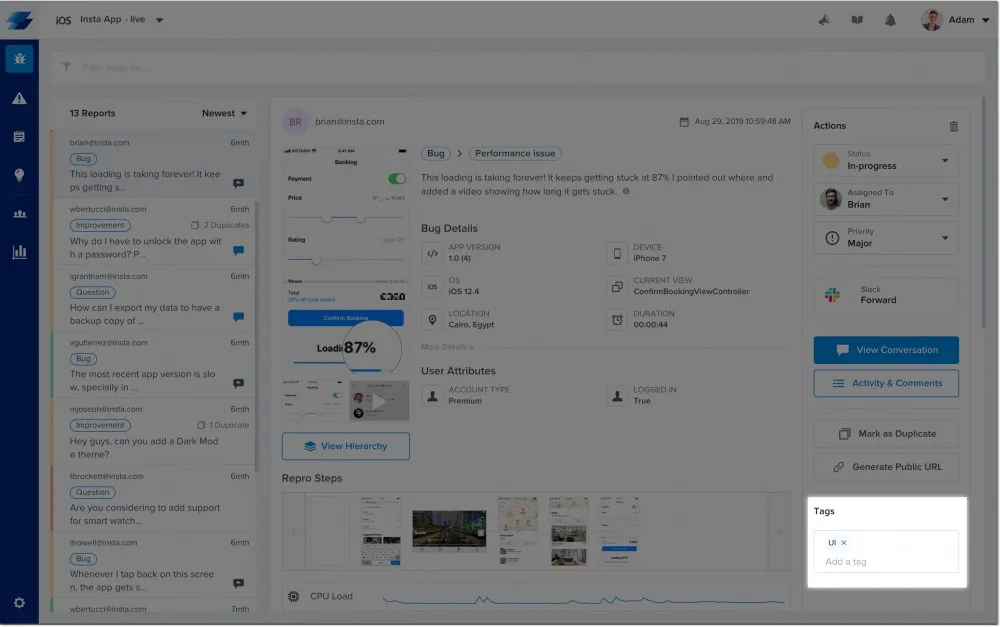
Tags can be used to label bug reports on Instabug or tickets on Zendesk so you can quickly sort them or decide on the required action. Unlike report categories, tags are added by you or your team, not the end-users of your app. Tags can easily be added from the bugs page by typing them in on the sidebar.
Set rules and triggers to automate your process
Rules and triggers are a great way to automate your bug tracking workflow and eliminate the time consumed by minor tasks. Routine actions like forwarding bugs to Zendesk, tagging them with the right tags, and assigning them to the relevant team member are simple but can be time-consuming.
Access the Rules page from your dashboard’s Settings. You can specify certain conditions and the actions that need to be taken when they are met. Report categories and tags can be used as conditions to automatically forward incoming bug reports to the relevant Zendesk integration.

Communicate with users
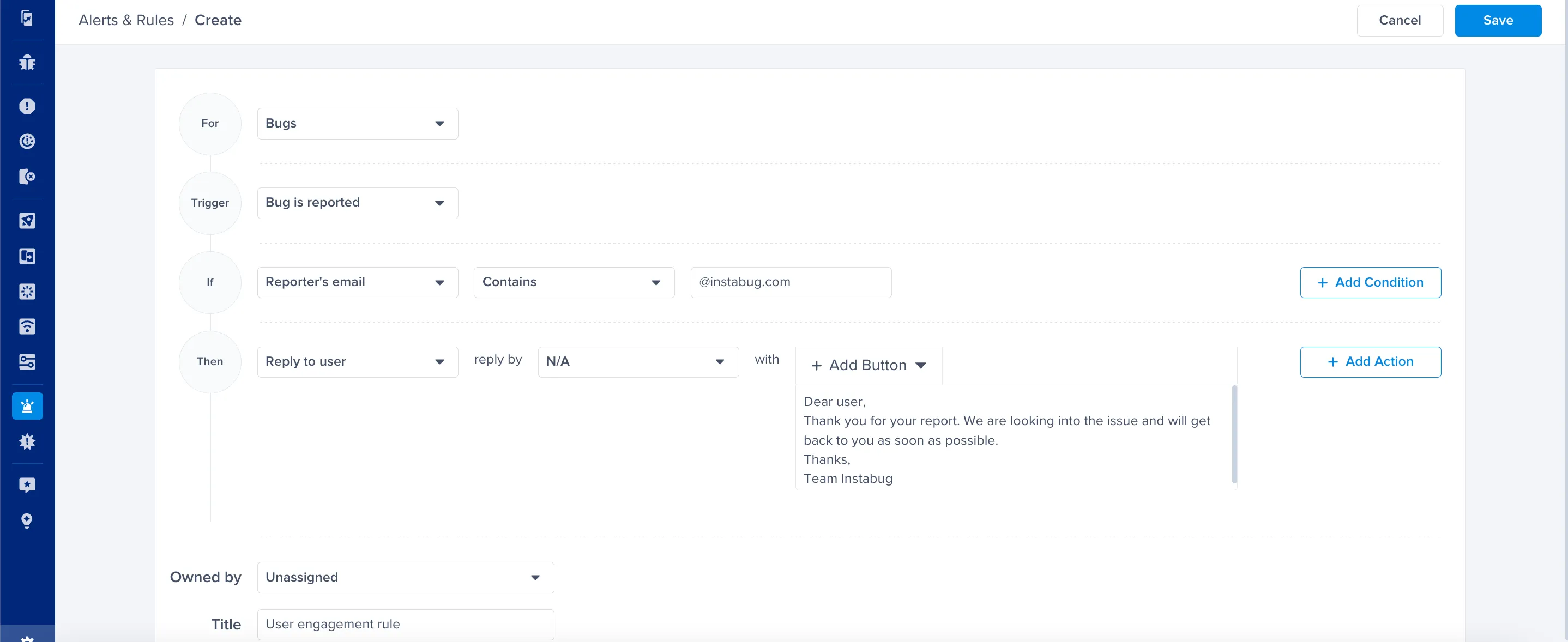
Prompt replies to your users are a very important part of the customer support process. You can set up Zendesk to automatically reply to incoming tickets with a macro saved message and your reply is sent as an email to your users. However, if the ticket you reply to was forwarded by Instabug, your users will also receive the reply in-app through Instabug's in-app chat.
On the other hand, you can use saved replies and rules to handle these auto-replies from your Instabug dashboard if you want to have more control over them. With Instabug, you can use conditions like app version and OS version to send different replies for different scenarios like prompting users to update if they're on an older version.
Learn more:
- How to Get the Most Out of Instabug Crash Reports
- Integrating Instabug’s SDK: Advanced Customization Tips
- Best Practices to Gather User Feedback
- Instabug vs. TestFlight: Getting the Best From Your Beta Test
Instabug empowers mobile teams to maintain industry-leading apps with mobile-focused, user-centric stability and performance monitoring.
Visit our sandbox or book a demo to see how Instabug can help your app









